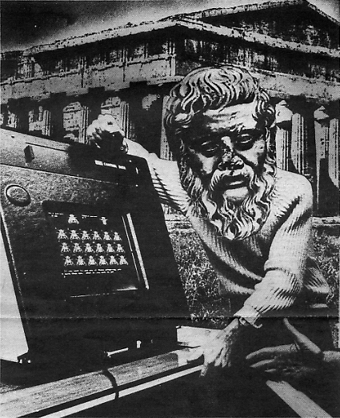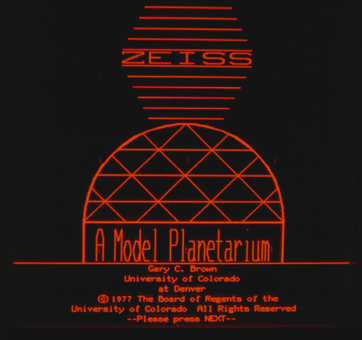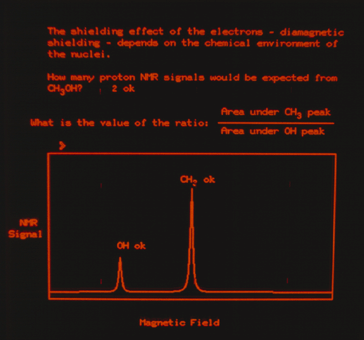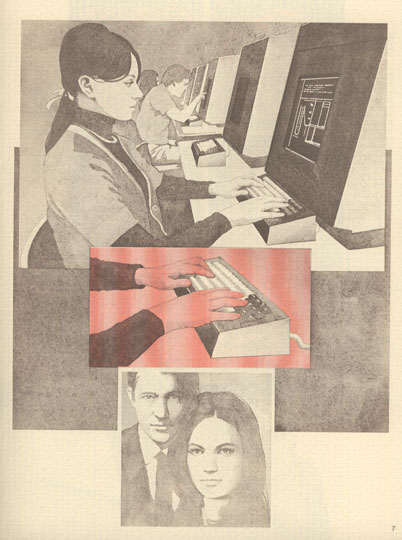The PLATO-IV system for computer aided instruction

PLATO was a limited success at best. During the 1960's, PLATO was a small system for a single classroom of terminals, but around 1972 new mainframe technology supported its transition to a system capable of serving up to one thousand simultaneous learners. Online chat and bulletin board notes features were added in the early 1970s, long before the Internet. In 1975, Control Data Corporation (CDC) entered the picture, establishing PLATO-IV as a commercial educational product which, by 1985, had established systems in over 100 campuses around the globe.
At the University of Amsterdam, PLATO was tested in the period 1977-1979 in the French, Musicology, Italian, Physics and Pedagogy departments. A substantial amount of existing 'courseware' (mainly prepared at the university of Illinois) was already available, and the idea was that this collection would be extended by the participating institutes in Amsterdam.
After two years the experiment came to an end when it became clear that the very substantial costs (about $200.000) were not equalled by the educational benefits. Today we can see that the project was too much ahead of its time, if only because of the difficulties and cost involved in sharing a distant mainframe computer. However, it seems that many of the objections of the late 70's are still valid to today: high cost of courseware development in relation to a course's limited lifecycle; troublesome user-machine interaction; difficulties of combining CAI with traditional instruction methods.


The PLATO-IV terminal was equipped with a then very advanced bi-level plasma-panel display (512*512 pixels, about 21*21 cm), invented by Don Bitzer (1968). This terminal not only could show graphics but also made it possible to combine computer output with slides projected from the rear under control of the system. A touch panel was used for graphical interaction. For managing up to 4000 terminals, the PLATO-IV mainframe computer needed 16MB of high-speed memory, at the time very large amount.
The top picture shows the terminal in a clipping from the university newspaper "Folia". In the middle are a screen taken from an astronomy lesson and one from a lesson on NMR (nuclear magnetic resonance).

A page from the Control Data PLATO brochure
The first paragraph was taken from The Role of Technology in Quality Education by G. David Garson (2000). The remainder of the text is based on the author's (EHD) experience as the supervisor of the Physics part of the Amsterdam PLATO experiment. See also B. Camstra e.o. (E.H. Dooijes): "Leren met de computer, eindrapport van het Plato-proefproject", University of Amsterdam 1979 (in Dutch).
Technical details of the PLATO IV installation were taken from Y. le Corre: The Computer and the Teaching of Physics, in: Trends in Physics, European Physical Society 1972.
